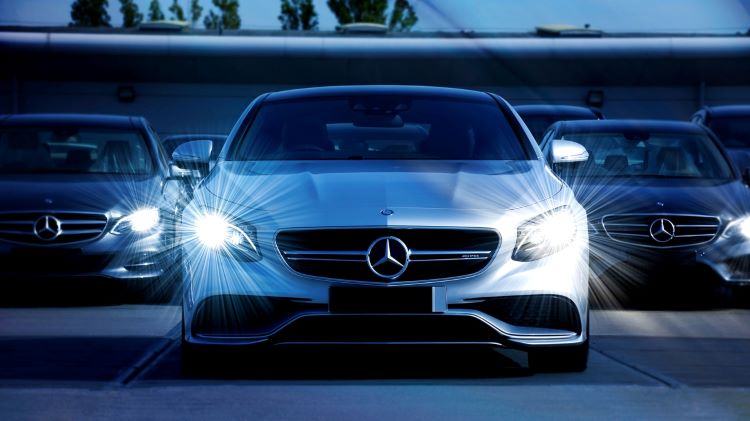Learn how to combat glare from oncoming vehicles with our expert guide, where we explore how LED headlights affect visibility when on the road.
Are LED headlights too bright?
As LED headlights become the standard for modern vehicles, concerns around their brightness have become a hot topic amongst drivers in the UK. Despite their benefits in terms of visibility and energy efficiency, many road users have commented on the discomfort of their glare, begging the question: are LED headlights too bright?What are LED headlights?
Modern cars have evolved over the years and now feature LED (light-emitting diode) headlights, which have a brighter bulb and are designed for better visibility and an improved driving experience, as well as a much longer lifespan. Their low power usage makes them an energy-efficient alternative to other bulbs on the market.
LED headlights can be spotted by their bright, white bulb compared to the warm yellow of traditional halogen bulbs.
How are LED headlights affecting drivers?
Although they offer many benefits, the glare from LED headlights is negatively impacting the experience of people on the roads, and according to our survey of 1,500 UK drivers, almost three in five (57%) believe that LED headlights are too bright.
With concerns for their safety and wellbeing, nearly a third (29%) of drivers are concerned about headlights when driving and frequently think about their impact, while a quarter of drivers (25%) say that LED lights impair their vision while driving.
When asked whether there should be any action surrounding the concern around headlight brightness, nearly a third (28%) of drivers said they’d support new legislation to combat LED headlights, including going as far as a complete ban.
Unsurprisingly, those who don’t have LED headlights on their vehicle are much more likely to find them too bright than those who do (78% v 47%), and are more likely to support a ban on LED headlights as a way of combatting the concern (43% v 17%).
The data also shows elderly people to be most affected by LED headlights. Almost two-fifths (39%) of over 65s are concerned about LED headlights, whereas only a quarter (25%) of younger generations are. Of those, more than a third (36%) of over 65s say that the overly-bright lights impair their vision while driving, compared to just 15% of 18-24s.
How to reduce glare from oncoming headlights
What many people may not realise is that there are a few measures you can take to reduce glare from oncoming headlights, and practice safer driving at night. If you’re someone who is regularly impacted by this, here are four measures you can take.
Keep any glass clean
Dirty mirrors and windows are more likely to fragment the light from oncoming headlights and create an uncomfortable glare. Stick to a regular maintenance routine that includes cleaning your windows and mirrors to keep them smudge-free. A microfibre cloth and glass cleaner will do the job efficiently.
Adjust the mirrors
The positioning of your rear-view and wing mirrors can impact how aggressive the glare is from oncoming headlights. It may take some tweaking to find the sweet spot, but a minor adjustment can make a noticeable difference to the reflection of headlights. If you have a self-dimming rear-view mirror, make sure the setting is turned on for maximum effect.
Dim the dashboard lights
Overly-bright dashboard lights can add the level of discomfort brough on by oncoming headlights, and there’s a quick way to reduce any impact. Most vehicles will have a setting to turn down the brightness of your dashboard lights, whether that’s a switch or lever, reducing the overall glare and impact on the eyes while driving.
Care for your eyes
If you wear glasses while on the road, it’s possible to switch to an anti-reflective lens for driving at night. Always speak to your optician about changes to your eye care.
It’s important to feel safe while driving on the road, especially at night or in adverse weather conditions. As well as mitigating the risk from other drivers, regular maintenance of your own vehicle is essential. Our guide on how to check your car lights will ensure they are up and running effectively.


